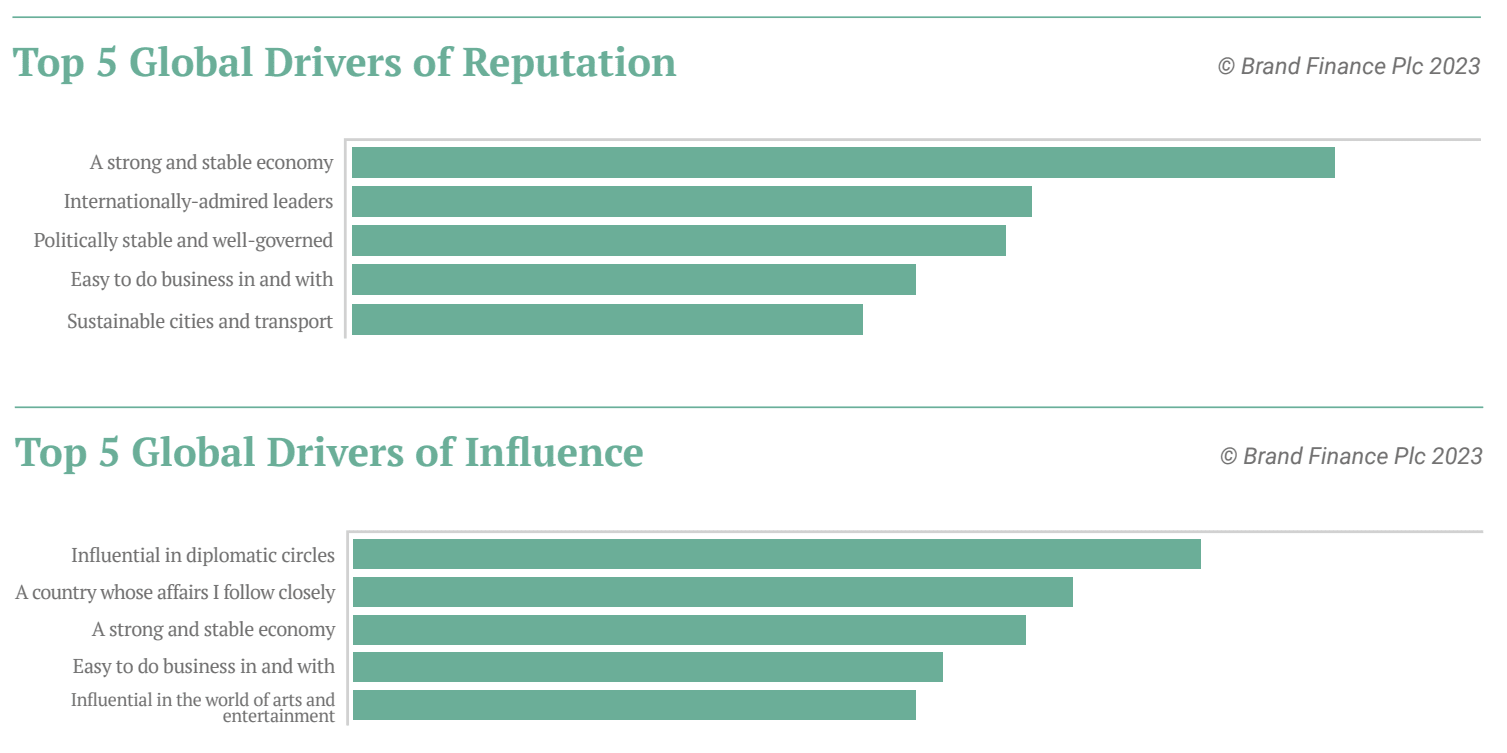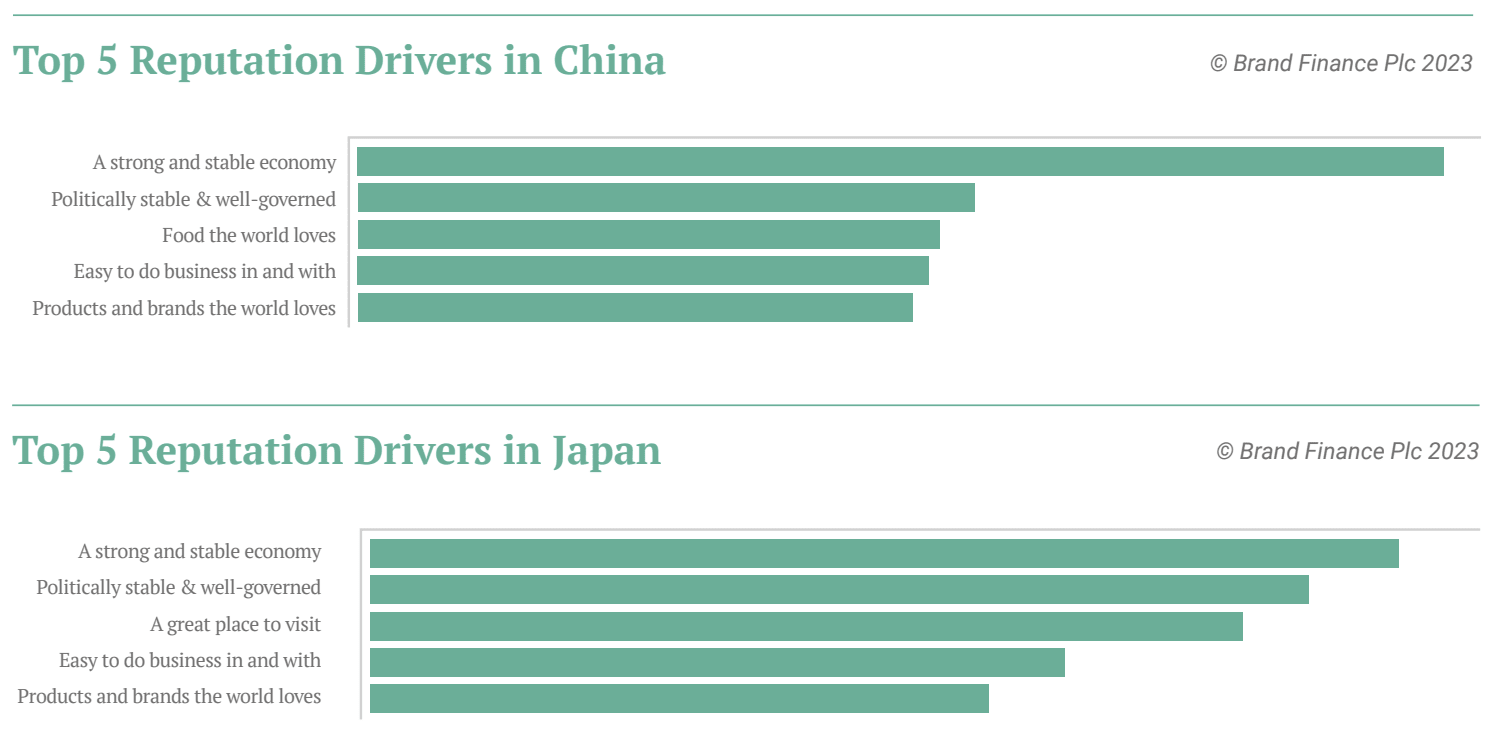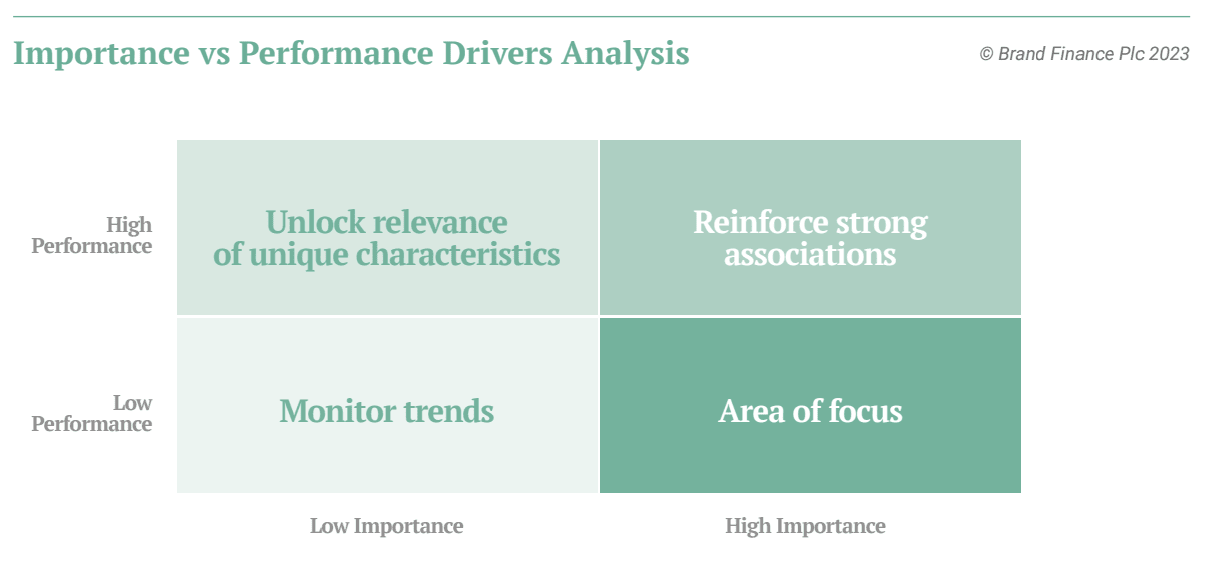How to build reputation and influence: A roadmap to setting strategic priorities
Carine Guillou, Research Director, Brand Finance
Katrina Rogala, Analytics Manager, Brand Finance
Nurturing reputation and coming across as an influential player are both essential objectives for nation brands, as it is important to build recognition in the best possible light in order to grow soft power. It will establish trust and provide a strong base for securing national interests. It will also help to attract investors, tourists, trade, and talent.
But how should nation brands go about growing reputation and influence?
Build a global strategic axis around key drivers
Prioritising activities that have an impact across many countries will save money and increase efficiency. Cultural and market specificities exist, but it is easy to get submerged into local tailoring paralysis. Therefore, while it is important to acknowledge these differences, it is best to start with identifying commonalities.
Brand Finance’s Global Soft Power Index research shows that there is a great opportunity for nation brands to build a global strategic axis where broad priorities, content, and guidelines can be harmonised. Running regression analysis against the Reputation and Influence metrics, we see that despite cultural differences, certain attributes consistently come out as stronger drivers regardless of country, region, or continent.

Likely linked to the universal need for security and safety, solid economic and political foundations are paramount –internally and in global affairs. Both reputation and influence are strongly driven by a nation’s ability to demonstrate a strong and stable economy with openness for business. Influence is also primarily linked to a nation’s convincing power in diplomatic circles, while reputation is very positively impacted by internationally admired leaders and a well-governed and politically stable situation. This means nations should endeavour to display reasonable messaging and actions that will make them come across as strong figures and role models.
Other key drivers of influence include attracting press interest (“affairs I follow closely”) and an often-overlooked area – “influential in arts and entertainment”: it is in fact an efficient lever and one that would certainly work to boost familiarity too.
Another dominant driver of reputation is “sustainable cities and transport”, which is indicative of the shifting mentality towards social responsibility and the expectation of leadership from governments and elected officials in this space.
Fine-tune locally and build cross-border acceptance
Understanding how to execute the strategy locally can involve considering additional local drivers to leverage. For example, in China, “food the world loves” is far more important than it is at the global level, where it ranks 28th out of the 35 attributes. In Japan, on the other hand, “great place to visit” jumps to third place, up from 24th globally. Meanwhile, “products and brands the world loves” is important to both China and Japan and likewise far more so than at a global level. A strategy linked to these local drivers may be worthwhile if these markets are an important part of the overall geographic target.

Nonetheless, the most important aspect of local fine-tuning is to support the intercultural fluency of partners, ambassadors, communities, organisations, and individuals involved in the delivery of initiatives. While nations can contribute to the world in ways that can generate positive emotions universally (food, music, sport, scenic beauty etc.), the way they present their activities can unexpectedly be misconstrued and intentions can easily be misinterpreted or recast.
Getting ahead of potential criticism is becoming increasingly complex. The international environment is full of tangible and intangible information that is widespread and vehiculated instantly via multiple digital channels. While modern media platforms constitute a massive opportunity for initiatives that can travel across frontiers, they also increasingly expose nations to risks of backlash.
The key is to identify cultural trends early, to be responsive to public opinion, and to demonstrate authenticity. Increasing exposure to their own culture can also be a powerful way for nations to ensure positive emotions are associated with their own lifestyle and communication style.
Define your area of focus and prioritise easier wins
Once key drivers are identified, the next step is to assess performance against top drivers to define the area of focus – that is, the important drivers that are weakly associated with the nation brand. Improving perceptions on these dimensions will have the highest impact.
Reinforcing strong associations with important drivers will also protect existing reputation and influence.

It is crucial to be realistic and strike the right balance between feasibility and potential impact. A nation must look at its resources, ease of implementation, touchpoints, government objectives, and the receptiveness of its home citizens.
A nation may have unique characteristics that are not strong drivers, but could still be converted into valuable outcomes if no significant investments are required and if international relevance can be unlocked.
Finally, monitoring trends that could become more important tomorrow could play a critical role longer term.
Want to find out more? Get in touch with Brand Finance at softpower@brandfinance.com and check out our Soft Power Zone here to find latest thinking and insights on how place branding and soft power intersect to the benefit of your city or nation.









